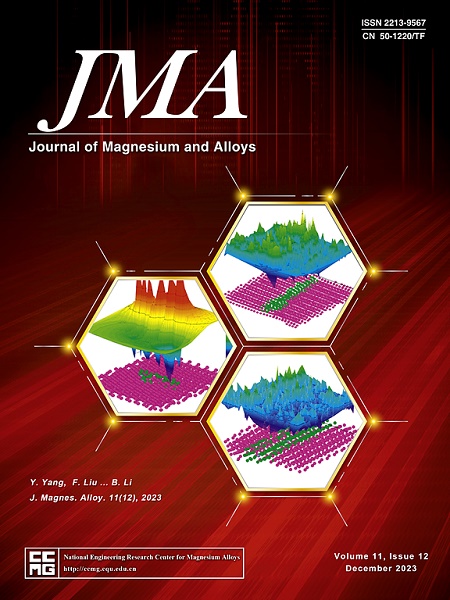Bioactive Ca-P coatings on WE43 alloy via soft sparking PEO: Structure, electrochemical performance and cytotoxicity studies
IF 13.8
1区 材料科学
Q1 METALLURGY & METALLURGICAL ENGINEERING
引用次数: 0
Abstract
Plasma electrolytic oxidation is a well-known technique for surface modification of biomedical magnesium alloys, with good corrosion protection and the ability to produce biocompatible and bioactive coatings. In this study, calcium-phosphate coatings were produced on WE43 magnesium alloy for use, as orthopedic implants. Coating formation was prepared using different oxidation parameters with various duty ratios (DR) of 15, 25 and 50 % and current ratios (R)-2 or 1.6. Application of R with excess cathodic current (R > 1) in processes with DR≥25 % allowed attaining the soft-sparking regime (SSR) that resulted in thicker oxide coatings with higher degree of crystallinity compared to the films obtained without SSR. The results of the corrosion tests contributed to a noticeable improvement in the corrosion resistance of the magnesium alloy. Optimization of the oxidation parameters allowed the selection of the variants with the most favorable degradation behavior over the tested immersion period, indicating a successful modification of the magnesium alloy surface to obtain an implant biomaterial capable of providing controlled degradation. Furthermore, biological evaluation of the produced coatings showed that the proposed surface modifications significantly reduced the cytotoxic effects observed in direct contact with the material while still maintaining the cell proliferation-promoting effects of the material eluents.

软火花PEO制备的WE43合金生物活性Ca-P涂层:结构、电化学性能和细胞毒性研究
等离子体电解氧化是生物医用镁合金表面改性的常用技术,具有良好的防腐性能和制备生物相容性和生物活性涂层的能力。本研究在WE43镁合金表面制备磷酸钙涂层,用于骨科植入物。在占空比(DR)为15%、25%和50% %,电流比(R)为-2或1.6的情况下,采用不同的氧化参数制备涂层。R与过量阴极电流的应用(R >;1)在DR≥25 %的工艺中,可以获得软火花状态(SSR),与没有SSR的膜相比,可以获得更厚的氧化物涂层,结晶度更高。腐蚀试验的结果使镁合金的耐腐蚀性能有了明显的提高。通过对氧化参数的优化,可以选择在测试浸泡期间具有最有利降解行为的变体,这表明镁合金表面的成功修饰获得了能够提供可控降解的植入生物材料。此外,对所生产的涂层的生物学评价表明,所提出的表面修饰显着降低了与材料直接接触时观察到的细胞毒性作用,同时仍然保持了材料洗脱液的细胞增殖促进作用。
本文章由计算机程序翻译,如有差异,请以英文原文为准。
求助全文
约1分钟内获得全文
求助全文
来源期刊

Journal of Magnesium and Alloys
Engineering-Mechanics of Materials
CiteScore
20.20
自引率
14.80%
发文量
52
审稿时长
59 days
期刊介绍:
The Journal of Magnesium and Alloys serves as a global platform for both theoretical and experimental studies in magnesium science and engineering. It welcomes submissions investigating various scientific and engineering factors impacting the metallurgy, processing, microstructure, properties, and applications of magnesium and alloys. The journal covers all aspects of magnesium and alloy research, including raw materials, alloy casting, extrusion and deformation, corrosion and surface treatment, joining and machining, simulation and modeling, microstructure evolution and mechanical properties, new alloy development, magnesium-based composites, bio-materials and energy materials, applications, and recycling.
 求助内容:
求助内容: 应助结果提醒方式:
应助结果提醒方式:


